Physical Address
304 North Cardinal St.
Dorchester Center, MA 02124
Physical Address
304 North Cardinal St.
Dorchester Center, MA 02124
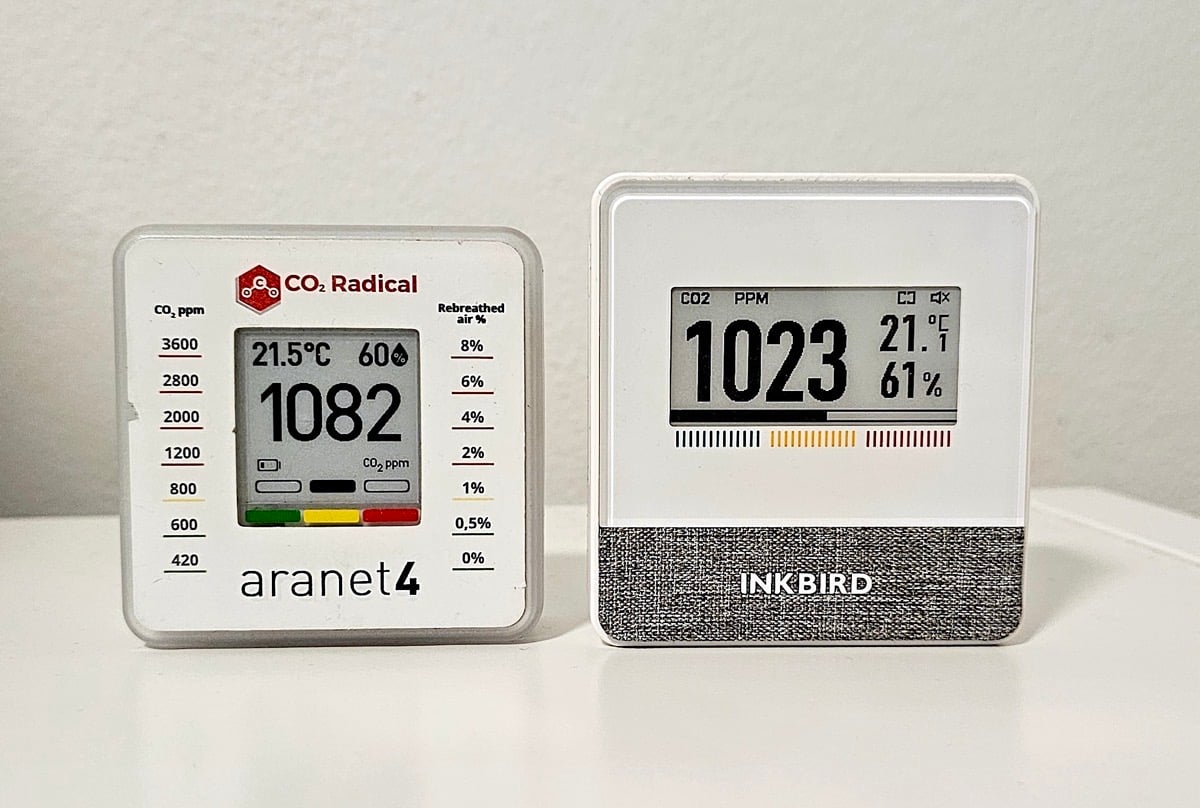
How to cite:
Wong M. How to get sick less. Lab Muffin Beauty Science. July 8, 2025. Accessed July 7, 2025.
https://labmuffin.com/how-to-get-sick-less/
I’ve become a bit of an airborne transmission nerd during the pandemic. Every once in a while I’ll share some of the tools I use on social media, and I’ve realised quite a lot of other people are also interested in how to not get sick, or at least get sick less, outside of getting vaccinated.
So here’s a quick guide to some tools and resources I’ve found helpful (I’ve probably forgotten some, please leave your suggestions).
Note: I’m not immunocompromised (so far) and don’t have specific health concerns (except for concerns from keeping on top of the research on covid’s health effects, which is far more concerning than “toxic” cosmetic ingredients), so my attempt at balancing infection risk and not being a complete shut-in may not be the same as yours.
First, let’s bust a few myths:
Covid almost entirely transmits through the air (and most other respiratory diseases too). The idea that covid transmitted through droplets was debunked pretty thoroughly around early 2021, thanks to some very dogged scientists. This means a lot of early pandemic control measures (hand washing, hand sanitiser, wiping surfaces, 6 foot rule, face shields, plexiglass barriers, cloth masks etc) aren’t actually very effective for preventing covid, and a lot of other respiratory bugs, although they can help with other germs.
Unfortunately, many parts of the medical establishment have been slow to adapt, so you’ll still see handwashing and coughing into your elbow promoted in a lot of places.
You can envisage germs moving like smoke as people breathe and talk, and you’ll have a pretty good idea of how they behave.
I try to socialise as much as possible outdoors, or in places with ventilation as close to outdoors as possible. This doesn’t completely get rid of infection risk but it cuts it down a lot, to mostly people you’re interacting with face-to-face. A portable CO2 monitor like the Aranet4 Home or the Inkbird (affiliate link) is the most practical way to check how good the ventilation is (how quickly fresh air is being pumped into the area you’re in).
CO2 is a good proxy for infection risk – essentially, the more CO2 is in the air, the more exhaled air you’re breathing.
Annoyingly, ventilation levels are largely a crapshoot. A lot of high risk (planes, buses) and low risk (uncrowded room with a crossbreeze) places are pretty obvious. But some places that feel really well ventilated aren’t (a gym with cold aircon blasting, crowded warehouse with open doors), and some are a pleasant surprise (quite a few restaurants, the Le Trianon balcony during a concert).
I’ve found that a CO2 monitor makes informed decision-making a lot easier – I think Mike Chen once described it as like when you’re playing a video game, the fog lifts and you can suddenly see where the monsters on the map are.
It’s difficult to calculate the exact risk (it depends also on the number of infected people you’re sharing air with, your own susceptibility etc.). My general approach: if it’s below 600 ppm I’m only likely to get infected by people I’m near; if it’s above 1000 ppm I try not to stay for too long, or put on a respirator.
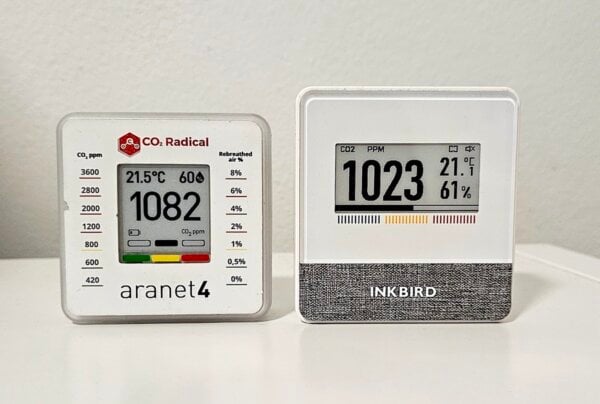
Having a CO2 monitor has also been handy for realising that we needed to crack open a bedroom window at night (we’re much groggier in the morning when the CO2 gets to 3000 ppm overnight), and checking the humidity for 3D printing filament. CO2 also builds up surprisingly quickly in cars and small rooms, even with just one occupant.
Note: if there are air purifiers or HEPA filters running, the air should be cleaner than the CO2 would suggest. Planes have pretty high CO2 while in the air, but there’s very good filtration when everything is running. However, filtration systems often aren’t running when the plane’s on the ground. I usually keep a respirator on while the plane is on the ground, but I’ll take it off to quickly eat and drink in the air.
These protect the wearer from breathing in germs and getting sick, far better than a surgical or cloth mask.
In general, soft N95s fit better and are more comfortable for most people compared to cup-style N95s, and headstraps seal better than earloops – but the most important consideration is how well the mask fits your face.
No, you don’t need to use a new N95 each time. You can use them until the filter material is worn out and it’s hard to breathe through them, or they don’t seal well to your face.
No, you don’t need a proper fit test to get good protection. Fit testing is required for occupational use of respirators, but you can generally tell how well they fit by doing a seal check.
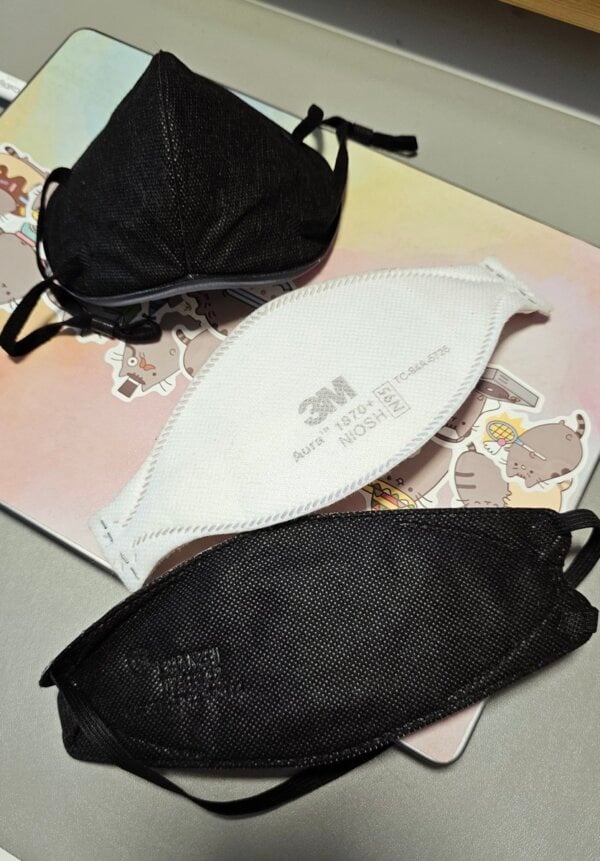

The 3M Aura is my favourite. It has very high filtration thanks to electrostatic material, and the boat-shaped design fits upwards of 90% of people. It’s just a super effective mask that’s also surprisingly comfortable. I find it far more comfortable than a surgical mask, since it sits off the nose and mouth, and ear loops hurt my ears. I’ve fallen asleep in these on planes a lot, and I often wear them while teaching.
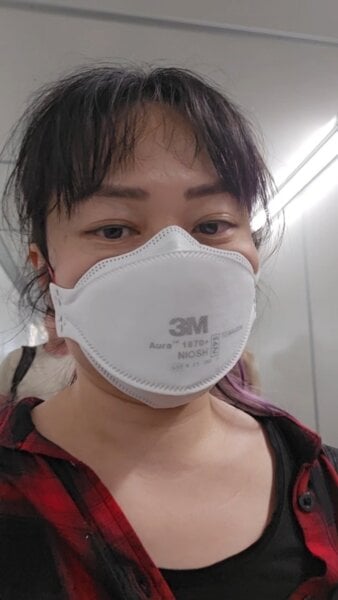

They’re around $5 AUD each from hardware stores, but as low as $2 each if you buy in bulk from an online medical supplier. There are a few different models (e.g. 1870+, 9320A+), but the differences aren’t that big – just look for the distinctive shape. Some people like the versions with a valve for exercising (I didn’t notice much difference), or the rare version with fabric straps (I like these because they don’t snap suddenly, but the straps seem to get looser faster and slip around on my hair more).
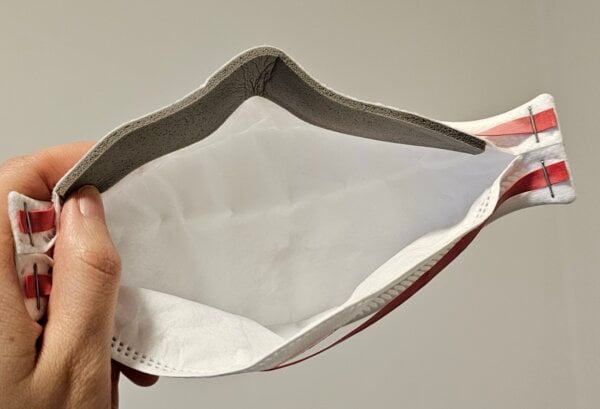

If your face is on the smaller side, stapling the underchin flap might be helpful. You can also use paper tape.
Laianzhi HYX1002 is the black mask I use for lower risk situations. It’s a KN100 mask (Chinese version of N95), and has a similar design to the Aura with black fabric straps. The medium is slightly looser on my face, and it’s a bit less breathable. Also comes in small and large, and there’s a gradient version too.
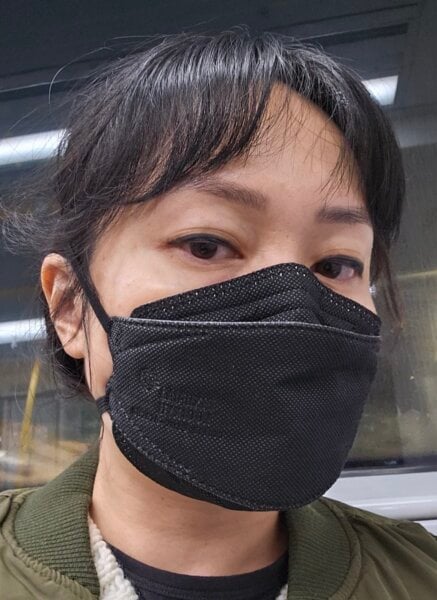

Zimi Air is an incredibly cool mask design that consists of a frame inside a filter. The filter has a gasket on the inside which allows a better seal while not pressing too tightly against your face – it’s great if you want to avoid marks on your face, or messing up your makeup!
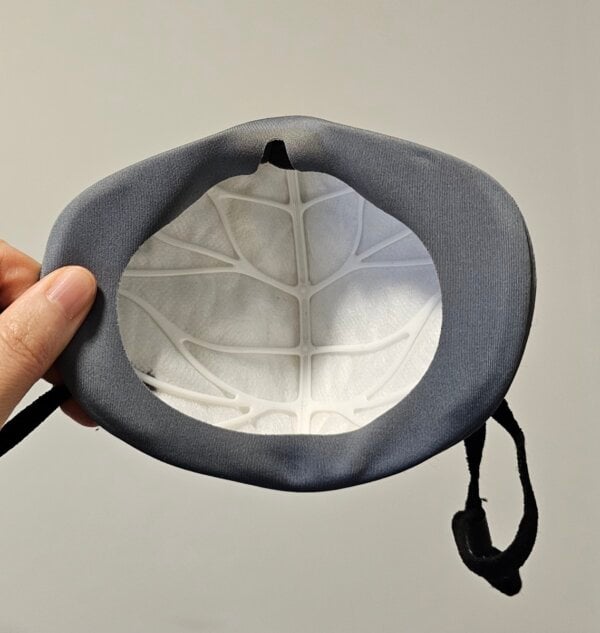

The downside is that it’s a bit fiddly to customise. You need to mess around with foam strips and do some qualitative fit testing to make sure it’s protecting you.
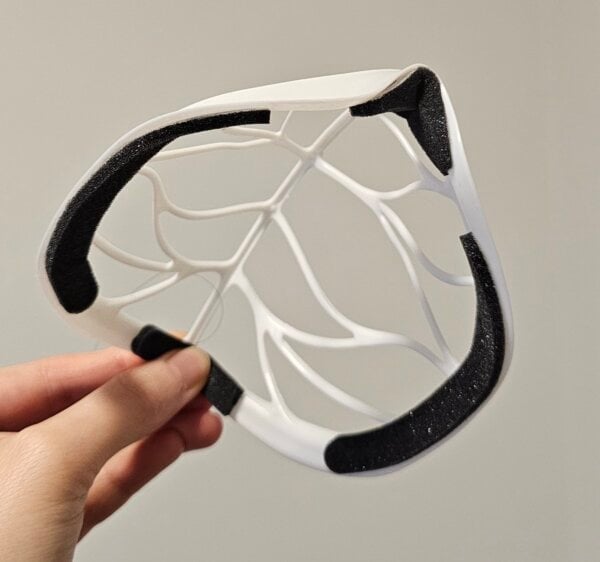

The earloop version can (in theory) work as well as a headstrap mask, because the soft gasket moulds well to your face. I find them a little moist for teaching and they don’t fold down as flat, but otherwise, these are fantastic.
Other mask suggestions:
Good resources on masks: Aaron Collins (Mask Nerd), Gerard Hughes
How to stop your head straps from messing up your hair
When I wear them: I almost always wear them whenever I’m indoors, the ventilation is poor, and I’m likely to be around sick or vulnerable people (planes, airports, pharmacies, hospitals, doctors’ clinics, teaching during winter…). I almost never wear them outdoors, but I’m rarely in crowds.
Bonus: They keep your nasal passages more moist on planes. I used to get nosebleeds all the time on planes, but since I started wearing respirators I haven’t had one! There’s nothing worse than being sick on holidays, then shooting out a fountain of blood every time you sneeze… I wish I knew how to avoid this sooner!
Most air purifiers put out a turbulent stream of air, which means the jet is mostly pulled from the surrounding “dirty” air by the time it hits your face. The AirFanta 4Lite (affiliate link) is a laminar air flow purifier, which maintains a clean stream for a longer distance, so you should be able to eat in front of it while breathing in pretty clean air.
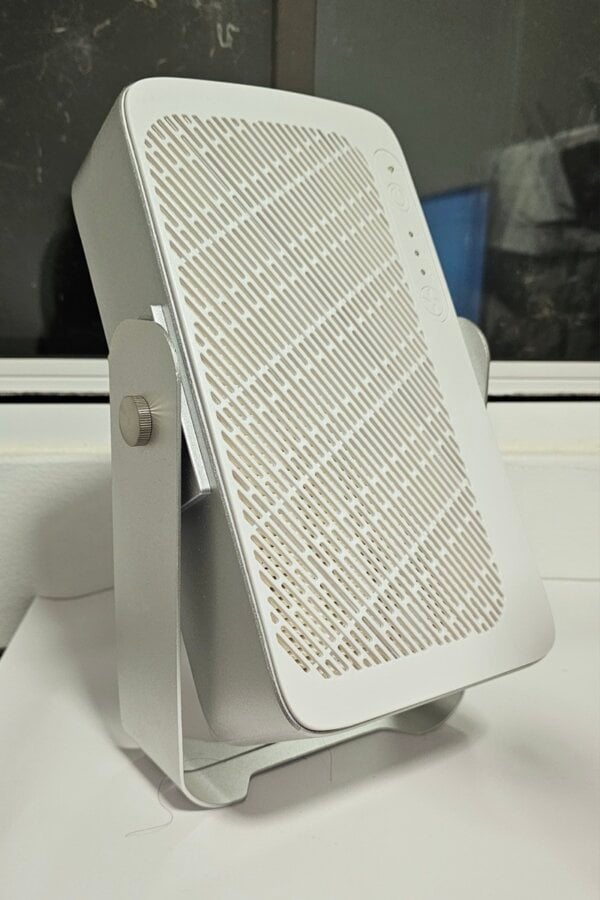

More on the 4Lite and how to use it here. Adam Wong, the engineer behind the AirFanta purifiers, often shares more info on Twitter (yeah I know… unfortunately a lot of technical covid discussion happens there!).
Far UVC refers to UVC light specifically at 222 nm. This particular wavelength seems to be able to effectively kill germs in the air, while causing minimal harm to human skin and eyes.
Note: Most UVC is not Far-UVC, and is far more dangerous (e.g. regular UVC is what they used at the Bored Ape convention where people got blinded).
There are still some questions around safety, especially since some (most?) products have incorrect specs, but the technology is very promising. Examples of places to use these are while travelling, at the dentist, or in restaurants.
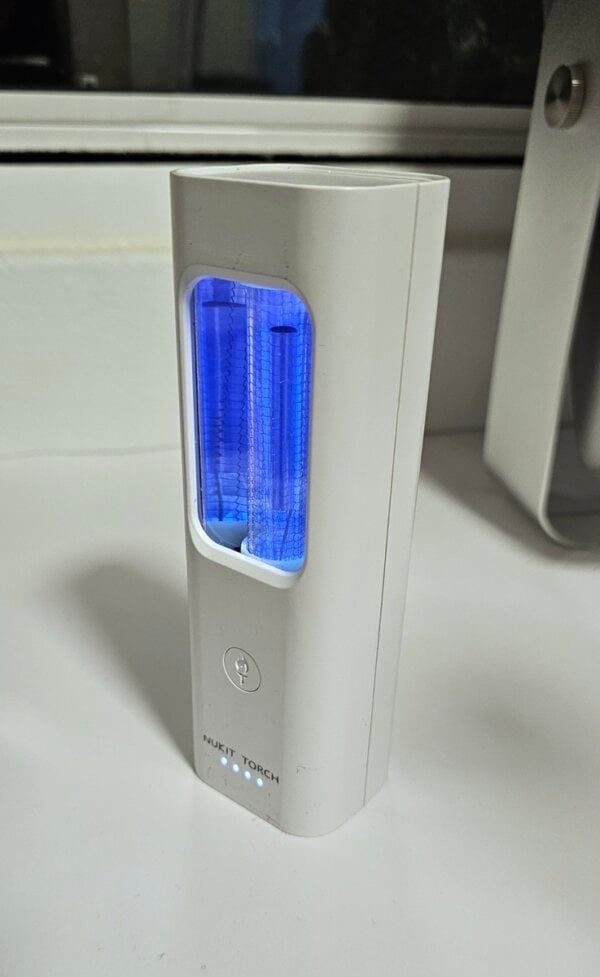

Nukit is an excellent source of information on how to sensibly use far-UVC, and (in my opinion) is one of the few brands that goes about designing, testing and advertising their products very responsibly. I own a set of Nukit torches and used them at high traffic areas at my wedding.
The Gauntlet
Australian scientists’ methods for avoiding infection
It’s Airborne
This post contains some Amazon affiliate links – for these products, Amazon was actually one of the best places to buy them, so I figured I may as well take some money off the billionaire while I’m at it (affiliate links don’t increase the price for you, they just give me a cut of the profit). But you’re welcome to use your own link if you prefer, of course!